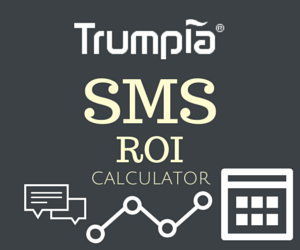 Copyright: bowie15 / 123RF Stock Photo
Copyright: bowie15 / 123RF Stock Photo
Cell phones are used to send and receive phone calls, and also for SMS text messaging. SMS, which stands for Short Message Service, is one of the most popular methods of communication in the world today. Texts are limited to 160 characters, meant for quick communications between two people. SMS texting is so popular that 8.3 trillion text messages will be sent in just this year alone. It is a highly personal, direct communication method used by a wide demographic. Over 80 percent of Americans text, making it the most common cell phone activity in the U.S. And this form of communicating is effective, because over 90 percent of texts are read in less than three minutes.
What Does SMS Mean for Business?
SMS texting is an effective method of reaching out to your customers in any industry. It is a marketing channel that is just beginning to be tapped for business, because many businesses are not aware of how to use it. Here are some facts to keep in mind as you learn about texting:
- Text messages have a 98 percent open rate, while email has only a 20 percent open rate.
- Text messaging has a 45 percent response rate, while email has a 6 percent response rate.
Businesses can use these incredible rates to their advantages if they learn how to work with SMS texting to create a positive user experience. Find out more about SMS effectiveness by contacting Trumpia.
How to Use SMS Texting to Drive Conversions and Sales
Texting offers many ways for building customer relationships and trust. Because SMS is a personal mode of communication, customers feel as if they are talking directly with you when they receive and return a text. It is important not to abuse that trust as you work with SMS to drive traffic to your website or brick and mortar business. Here are some ways that companies are using SMS technology to communicate with subscribers:
- Sending appointment and pickup/delivery reminders to clients
- To communicate text-only special offers or discounts
- To let subscribers know about limited coupon offers for same day purchase
- Driving lunch or dinner traffic to restaurants on a slow day with same day discounts
- Sending weather alerts for universities, schools or churches
- Sending out special event notices to specific groups in their church congregation
- Letting parents of high school seniors know about graduation requirement deadlines
- Sending out alerts to bank customers when an account balance is low.
As you can see by this list, SMS is used for a wide range of alerts, messages or reminders to engage subscribers in a manner that is relevant to them. For more ideas of how you can use SMS in your business, contact Trumpia.
The Power of Opting-In
SMS requires that subscribers opt-in to the service before you can send them messages. That point means that they have already agreed to receive your messages before you send the first one. The opt-in puts power in the hands of the subscriber which gives them confidence. But, at the same time, they have the power to turn the service off at any time.
As you create your SMS messages for your subscribers, it is important to stay relevant to their needs. You can do this by segmenting your subscriber list into smaller sub groups; sending messages to each group separately that are relevant only to them. A good rule of thumb is to send an average of two SMS messages per month which has been shown to be the number best tolerated by subscribers. This number may vary depending on what you are using the messaging for. For instance, bank alerts do not need to be limited.
Trumpia has the experience to guide you through the learning curve of using SMS messaging for business. Contact them to learn more.




